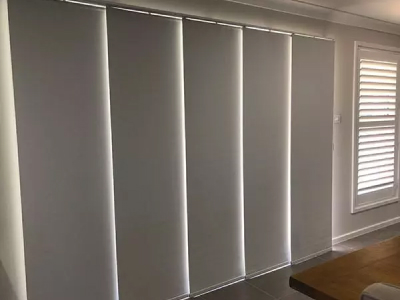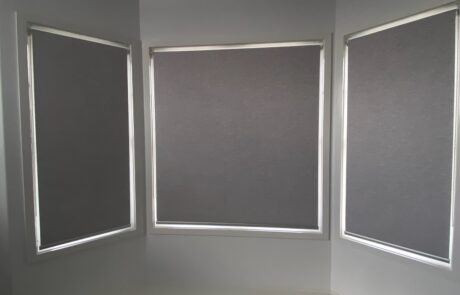

Free Quotes Within
48 Hours

Of 4 to 6 Weeks

Explore our stunning collection of custom blinds to elevate your Brisbane home or business
Looking to enhance the ambience and functionality of your space? Our exquisite selection of custom-made blinds are suitable for all tastes, styles and budgets!
At Custom Windows Furnishings, we offer a perfect solution for privacy, light control, and aesthetic appeal. Whether you prefer the sleek modern look of roller blinds, the classic elegance of Venetians, or the soft sophistication of Roman blinds, you’ll find a vast array of options to suit your style.
Our window furnishings are designed to withstand Brisbane’s harsh climate, providing durability and energy efficiency. With customisable materials, colours, and patterns, you can transform any room into a comfortable and stylish retreat.
Discover the possibilities of window coverings by reaching out on (07) 3376 5555 or getting in touch for an obligation-free measure and quote today.

Our Products
What are the best types?
The best window treatments will come down to your personal preference, specific needs, and room decor. It’s easy to feel overwhelmed by your options, so here are some popular options:
Roller Blinds
These are sleek and versatile, offering excellent light control and privacy. They come in a variety of fabrics and can complement modern or minimalist interiors.
Venetians
Classic and timeless, they provide precise control over light and privacy. They are available in wood or aluminium, fitting both traditional and contemporary aesthetics.
Roman Blinds
Elegant and soft, they offer a luxurious feel. They work well in bedrooms and living rooms and come in various fabric choices.
Vertical Blinds
Ideal for large windows or sliding doors, they are practical and easy to maintain. They come in various materials, including fabric, PVC, and aluminium.
Panel Glides
Perfect for modern spaces, panel glides offer a sleek and minimalistic look. They are excellent for covering wide expanses like glass doors.
Ultimately, the best type will depend on your style, the room’s purpose, and your specific requirements for light, privacy, and insulation. For more help or guidance, reach out on (07) 3376 5555 to speak with a member of our team.
How much do blinds typically cost?
The cost can vary widely based on several factors, including the type of window treatment, the size of your windows, the materials used, and any additional features or customisation. Here’s a rough estimate of what you can expect:
- Roller Blinds: Basic options can start at around $50 to $100 per window. Designer or custom-made options with premium fabrics may cost more, potentially ranging from $100 to $300 or more per window.
- Venetians: Aluminium Venetians typically start at $60 to $120 per window, while wooden Venetians can be more expensive, starting at $100 and going up to $300 or more per window.
- Roman Blinds: They can range from $100 to $300 or more per window, depending on the fabric and customisation options.
- Vertical Blinds: The cost varies based on the material and size but generally falls in the range of $100 to $300 or more per window.
- Panel Glides: Panel glides may start at $150 to $250 per window, but this can increase if you opt for premium fabrics or more extensive customisation.
The benefits explained
✔ Light Control: They provide excellent control over natural light, allowing you to adjust the amount of sunlight entering your space. This is especially valuable in Brisbane, where the climate can be quite sunny.
✔ Privacy: They offer a high level of privacy, ensuring that your indoor activities remain concealed from prying eyes.
✔ Temperature Regulation: They can help regulate indoor temperatures by blocking out the sun’s heat during hot Brisbane summers and providing insulation during the cooler months, potentially reducing energy bills.
✔ Versatility: With a wide range of styles, materials, and colours to choose from, they can complement any decor, from modern to traditional.
✔ Durability: Many options are designed to withstand Brisbane’s climate, including UV-resistant materials that prevent fading due to sunlight exposure.
✔ Easy Maintenance: They are relatively easy to clean and maintain, making them a practical choice for busy households and businesses.
✔ Customisation: They can be customised to fit various window sizes and shapes, allowing for a tailored look and fit.
✔ Aesthetics: They can enhance the aesthetic appeal of your space, adding style and sophistication to your interior design.
✔ Noise Reduction: Some types can help reduce outside noise, creating a quieter and more comfortable living or working environment.
✔ Security: Closed variations can act as a deterrent to potential intruders by concealing the interior of your property.
What is the installation process?
The installation process is generally straightforward, but it’s important to follow the manufacturer’s instructions and, in some cases, consider professional installation.
Here is a general overview:
- Measure Your Windows: Before purchase, measure your windows accurately. Measure the width and height of each window where you plan the installation. This ensures you get the window coverings that fit perfectly.
- Select Your Best Option: Choose the type that best suit your needs and style preferences. Ensure you have all the necessary components, including brackets, screws, and any additional hardware required for installation.
- Prepare Your Tools: Gather the necessary tools, which typically include a tape measure, a level, a screwdriver, a pencil, and a drill. Ensure your tools are in good working condition.
- Position the Brackets: Mark the locations where the brackets will be installed. Use a level to make sure they are straight and even. Typically, brackets are installed at the top of the window frame or on the wall above the window.
- Secure the Brackets: Attach the brackets using the provided screws and anchors if needed. Ensure they are firmly in place and can support the weight.
- Install the Headrail: For most types, slide or clip the headrail (the top part) into the brackets. Secure it in place by locking it or using any provided mechanisms.
- Attach: Depending on the type, you may need to follow specific instructions for attaching the blind slats or panels to the headrail. This often involves hooking or sliding them into place.
- Test and Adjust: Test the window furnishings to ensure they operate smoothly and adjust properly. Make any necessary adjustments to the cord or wand mechanisms to ensure they are working correctly.
- Safety Considerations: If you have children or pets, make sure to install safety devices to keep cords out of reach and prevent accidents.
- Clean Up: After installation, clean up any debris and ensure your window coverings are free from any marks or smudges.
Not looking to spend your weekend on a DIY project? If you’re interested in saving time and money (a DIY mistake can be expensive!), get in touch with a member of our team for your 100% free measure and quote.
Are they cheaper than curtains?
The cost of these window treatments versus curtains can vary widely depending on various factors, including the type, the quality of materials, the size of the windows, and any additional features or customisation. In general, they tend to be more cost-effective than curtains, but it ultimately depends on your specific choices and requirements. Here’s a comparison:
Blinds
- Economical Options: Basic options are often more budget-friendly compared to curtains. They can start at relatively low prices per window.
- Material Variations: They come in a wide range of materials, from economical options like PVC to premium choices like real wood or high-quality fabrics. Your choice of material will significantly impact the cost.
- Additional Features: Motorised blinds or options with advanced features such as remote control or smart home integration can be more expensive.
Curtains
- Fabric Costs: The cost of curtains is largely determined by the fabric you choose. Basic fabrics like cotton or polyester tend to be more affordable, while high-end materials like silk or linen can be quite expensive.
- Lining and Length: Adding features like blackout lining or choosing longer curtains will increase the overall cost.
- Customisation: Custom-made curtains with specific measurements and designs can be more costly compared to off-the-shelf options.










































